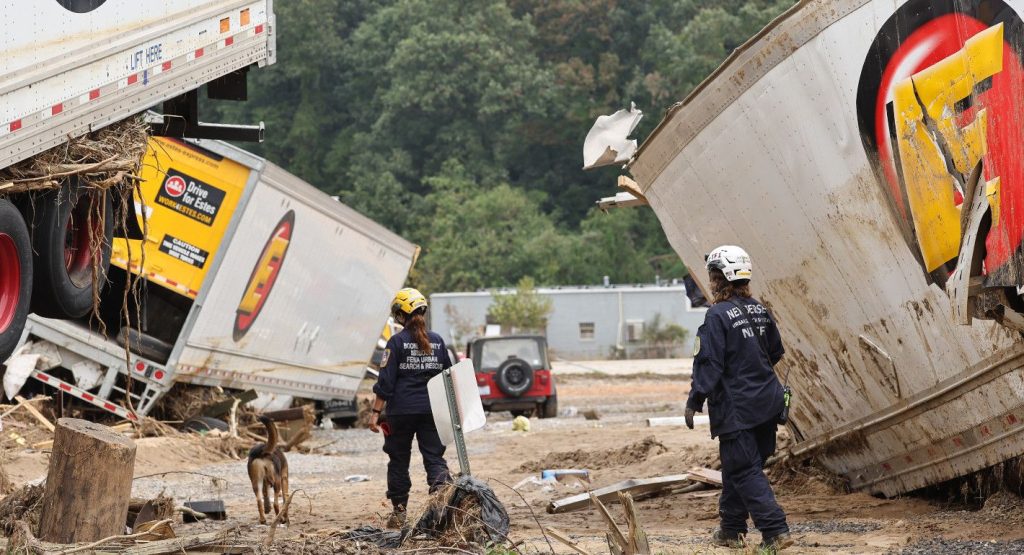Hurricanes Helene and Milton: Breeding Grounds for Conspiracy and Disinformation
The recent hurricanes, Helene and Milton, have unfortunately become fertile ground for the proliferation of conspiracy theories and disinformation campaigns. While specific analyses of these storms are yet to emerge, historical precedent reveals a disturbing pattern of foreign adversaries exploiting disasters to erode public trust in government and sow discord among citizens. This trend is further exacerbated by the amplification of such narratives by influential figures like former President Donald Trump, utilizing platforms like X (formerly Twitter) to disseminate misinformation.
The aftermath of the 2023 Hawaiian wildfires witnessed a concerted disinformation campaign orchestrated by China, falsely attributing the devastation to a government-engineered "weather weapon." This echoes the current conspiracy theory surrounding Hurricane Helene, which baselessly claims government manipulation despite the storm’s clear origins in the convergence of warm air and water. Similarly, following the 2023 Ohio train derailment, Russia deployed X-verified bots to spread false narratives about the U.S. prioritizing aid to Ukraine over Ohio and the alleged deaths of scientists en route to the disaster site. These campaigns resonate with the current wave of unsubstantiated rumors circulating on social media, including claims of FEMA obstructing aid in North Carolina.
The heightened attention drawn to Helene and Milton is not unique. Their significance and extensive media coverage make them prime targets for misinformation campaigns. Conspiracy theories exploit the fear and desperation that accompany disasters, offering simplistic explanations and scapegoats that resonate with those seeking someone to blame. This preys on the vulnerability of individuals grappling with the aftermath of such events.
FEMA, the Federal Emergency Management Agency, has become a focal point of many Helene-related conspiracy theories, with false claims of agents seizing land circulating widely. These attacks, coupled with anti-Semitic attacks on elected officials, underscore a deliberate strategy to undermine public confidence in government institutions. While some rumors contain kernels of truth – for instance, the opportunistic practices of private developers acquiring land at low prices after disasters – they are distorted and weaponized to create a climate of distrust. FEMA inspectors assessing damage to determine aid amounts are reframed as sinister figures, fueling unfounded fears.
The playbook for sowing discord extends beyond attacks on government agencies to include the targeting of vulnerable populations like immigrants. Early in the Helene recovery efforts, Trump propagated the false claim that FEMA diverted disaster relief funds to immigrants. Ironically, it was Trump himself who reallocated $155 million from the disaster fund in 2019 to construct migrant shelters in Mexico. This tactic simultaneously undermines government officials providing critical aid while further polarizing American society.
One of the most pervasive falsehoods, largely disseminated by Trump, claims that FEMA is offering a mere $750 to Helene victims. This oversimplification ignores the complex and multifaceted nature of disaster recovery assistance. The U.S. disaster recovery system involves a network of federal, state, and local governments, charities, insurance companies, and banks. While imperfect, the system extends far beyond a nominal payment to those who have lost everything. FEMA provides a range of assistance programs, including $750 for emergency supplies, up to $42,500 for home repair or rebuilding, and up to 18 months of rental assistance. Research from the Disaster Dollar Database indicates an average FEMA payout of just under $6,000 per household through its Individuals and Households Program (IHP). North Carolina and Florida have seen average IHP payouts of $4,169 and $4,279, respectively.
The immediate aftermath of a disaster often obscures the long-term recovery process and the numerous agencies involved. In Houston, seven years after Hurricane Harvey, federal recovery funds are still being utilized. A crucial yet lesser-known aspect of FEMA’s work is the Public Assistance Program, which reimburses jurisdictions for expenses related to search and rescue, first responder overtime, infrastructure repair, and school building restoration. From 2015 to April 2024, FEMA disbursed $12 billion for IHP and a staggering $52 billion in public assistance across 170 disasters.
The challenges posed by Helene and Milton expose the limitations of the existing disaster ecosystem and highlight the need for long-term solutions. Congress’s reluctance to convene an emergency appropriation for recovery further complicates the situation. The confluence of natural disasters and the deliberate spread of misinformation underscores the urgent need for increased media literacy, critical thinking skills, and a renewed commitment to factual information. This is crucial to counteracting the corrosive effects of conspiracy theories and strengthening community resilience in the face of adversity. The interplay of accurate information, effective government response, and community cooperation are essential to navigate the complex landscape of disaster recovery, rebuild lives, and foster trust in times of crisis.


